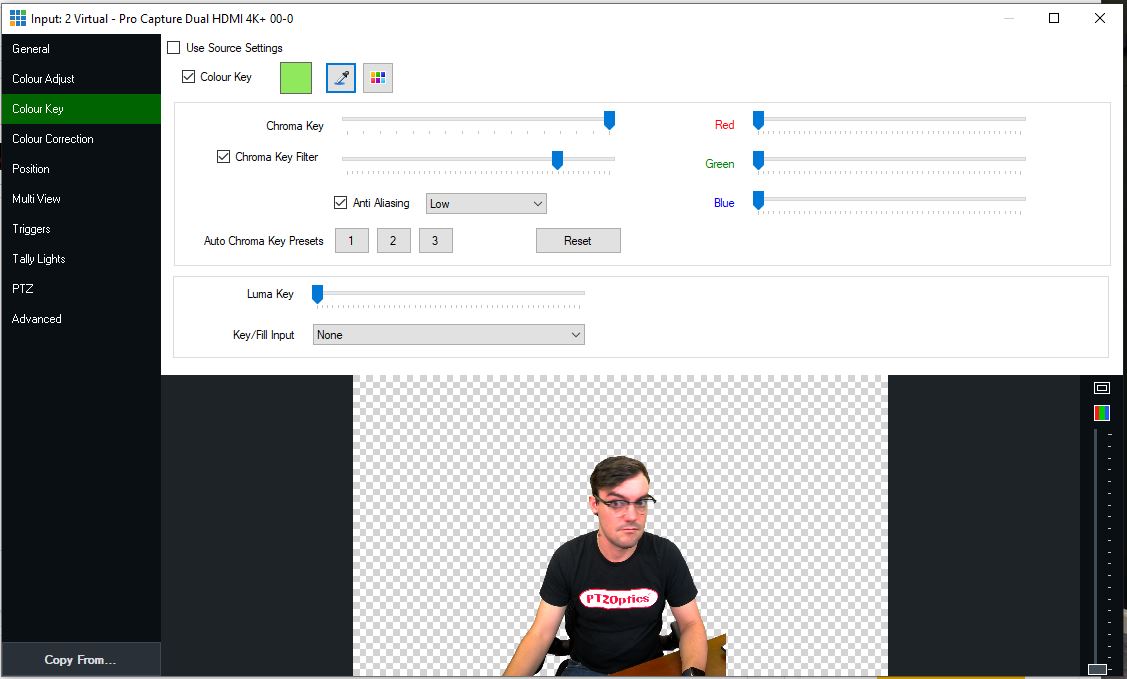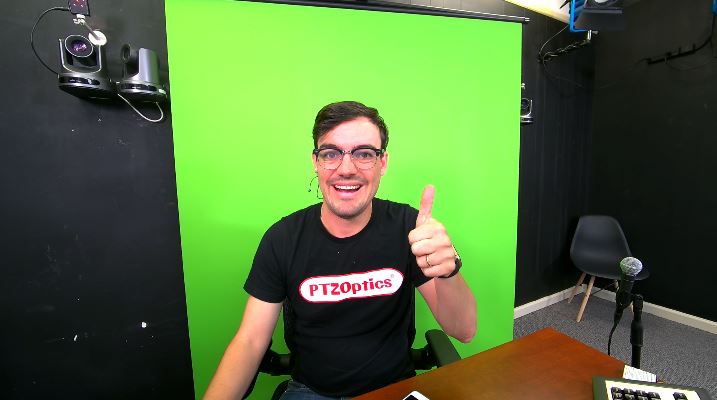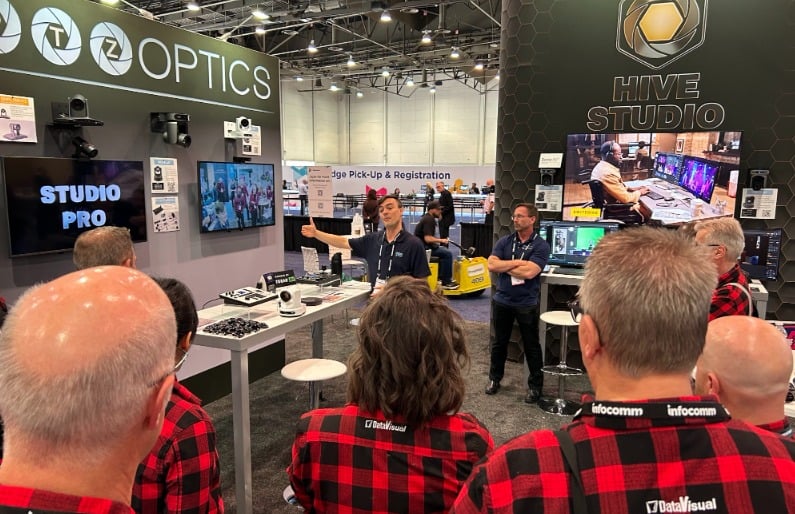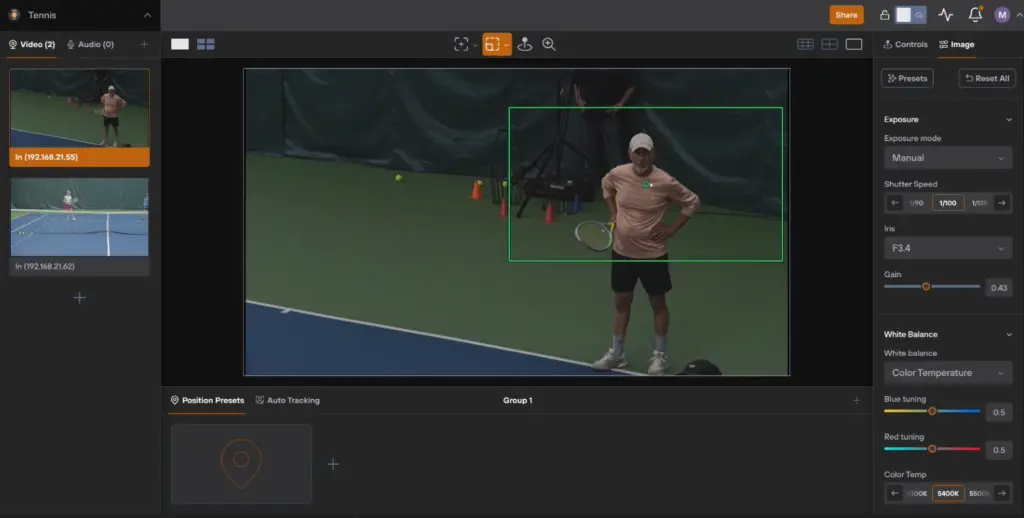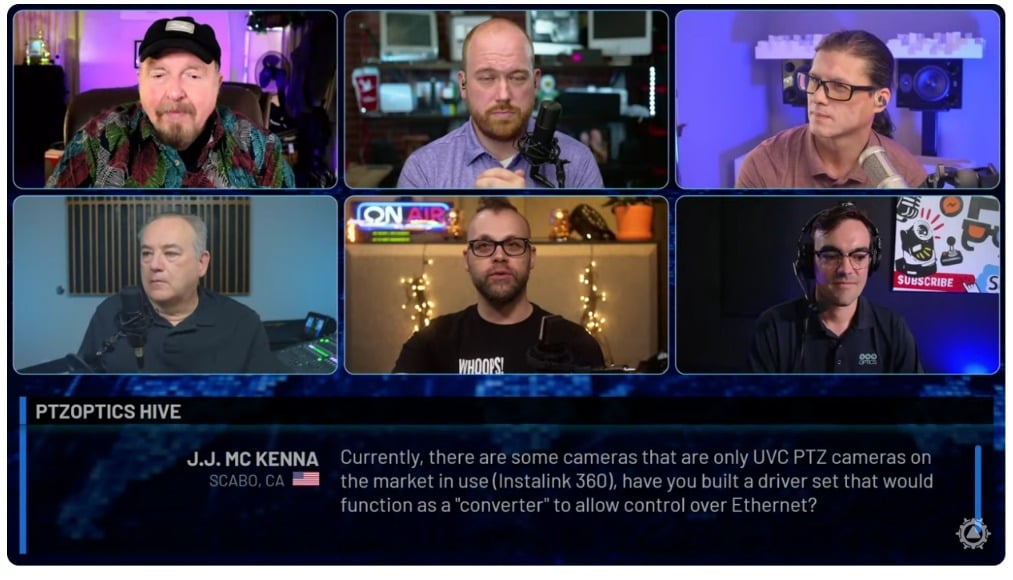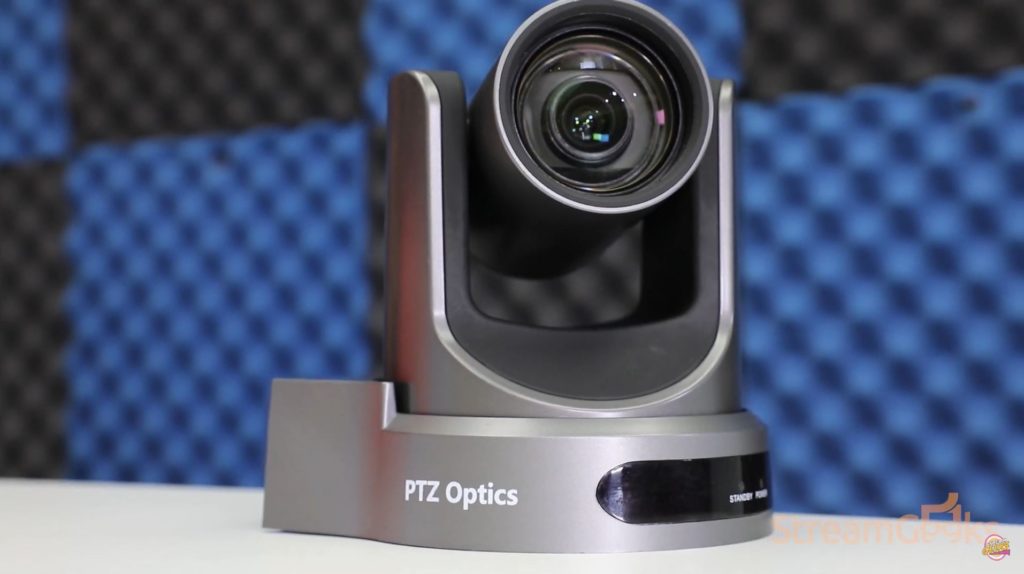How to use Virtual Sets with Zoom
Written by Paul Richards on August 6, 2020
It’s time to really impress your co-workers and meeting attendees in your next Zoom session. Some of our most popular blogs and video content in recent past have been all about connecting OBS and/or vMix with Zoom. This is done using a “virtual” webcam input with Zoom, instead of a regular webcam. Once you do this, you have the full capabilities of vMix or OBS to create video production quality content inside of your Zoom meetings. Virtual Sets in particular are a great way to increase your production quality and surprise your students or co-workers with some cool sweeping zooms, and panning camera movements inside of virtual sets. But how does it all work?
Setting up Virtual Sets in Zoom
First of all, what is a virtual set? Virtual sets are just like digital layering system which combine a background, a foreground and a chromakey video layer in between. If you would like to make your own virtual set, you only need to create a high resolution background file and combine it with a nice foreground png image. The result is a combination of media assets that you can use to put your video image in-between. Virtual sets generally leverage a video camera with a green screen background that can be used with chroma-key technology to remove the background. The result is a good looking virtual set where you actually look like you are in a new place. It’s a great way to turn a studio or home office area into any area that you would like.
Tips for Green Screens and Virtual Sets
- Chroma Key Settings
Green Screen Lighting and Setup
Perhaps the most important tip for setting up a successful green screen system is lighting. You don’t need a lot of lighting, but you should get a wide array of light from various angles. A shadow on your green screen can cause problems if the camera is catching it. One tip discussed in the included video, is that you can always crop off edges that get in the way. So consider, lighting your subject and green screen before worrying about touching up your video in production.
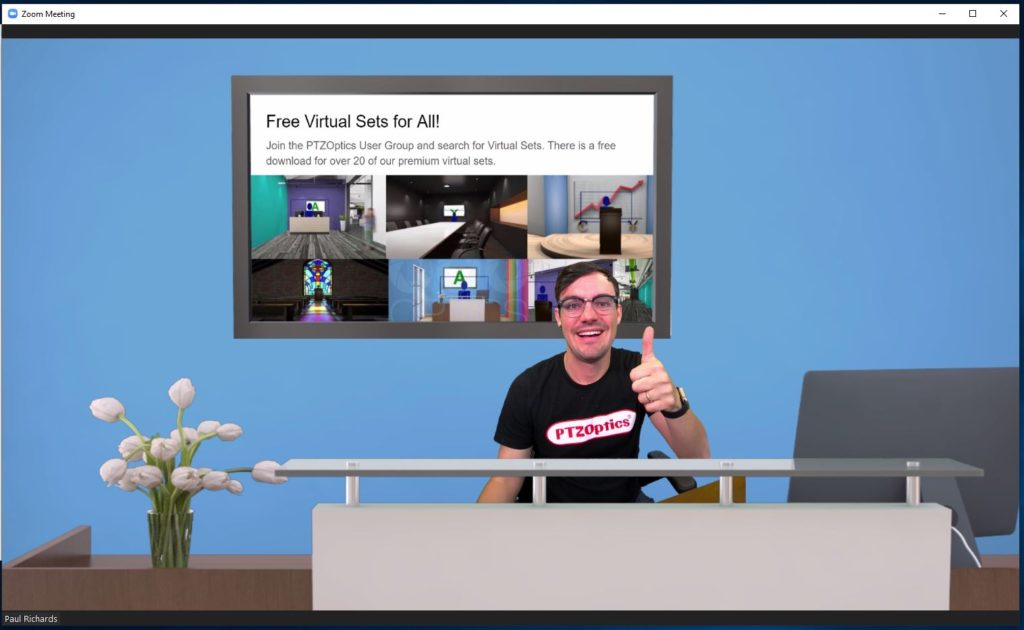
Virtual Sets for Zoom Meetings
Using your Virtual Sets
Great news! We have over 20 virtual sets that you can download for free to use with OBS, Wirecast, xSplit, vMix and the NewTek TriCasters. These virtual sets which you can download here, give you all of the files you need to start customizing and creating your own virtual sets. The downloads are available on Dropbox and they also include the Adobe Photoshop files you can use to move things around and customize to your heart’s desire. Some of our customers are looking to create virtual experiences that include real pictures for their brands or places that they own. Using our Slideshare presentation below, you can brush up on your understanding of virtual sets and learn how to use them with Zoom.
Using Virtual Sets with OBS
You might be thinking at this point, hey I use OBS, what about me? Well we have an entire video on how to use the free virtual sets mentioned above in OBS. OBS does not have a 3D virtual set engine the same way that vMix does. But you can still make virtual sets and use them in OBS. People actually do it all the time. To use virtual sets inside of OBS you need to create a scene with a background and foreground. Using your camera with a green screen background, you can apply the chroma-key filter to remove the background. Using the OBS layering system, you can put your video in-between the background and foreground. If you want to create different views, you can create different OBS scenes to switch in-between.
Pro Tip: Try creating a virtual set inside of OBS. Then duplicate your scene by right-clicking it and selecting duplicate. Next, you can move your scene around, zoom things in, or even try to create a matching scene with a new angle. Then when you switch between these scenes they will look great.
Bringing your virtual sets into Zoom
Okay, now for the fun part. You want to be able to share your virtual sets with friends and colleagues from around the world. If you do not already know how to connect OBS or vMix to a Zoom meeting you should read one of the follow blog posts on our website:
Both of the blog posts and tutorial videos explain how you can take the virtual sets you have created inside of OBS or vMix and pump the video into Zoom. It’s done with a “virtual” webcam. Next, you might be thinking, well you reviewed a bunch of content but I need to learn how to really use these virtual sets and create my own. Well, you can take an entire course on the basics of green screens and virtual sets here.
Conclusion
Zoom meetings just got a huge update in 5.2. If you go into your video settings area inside of Zoom you will now see virtual backgrounds and a new area for filters. The filters include transparent overlay files and even interactive filters with augmented reality. It’s really cool, and you are going to see a lot of people using these stock templates soon. If you don’t see the options for video backgrounds and filters, go to your Zoom client and click the “update” button in the top right drop-down menu.
As you can see in our video, we actually combine the Zoom filters with vMix virtual sets and it worked out great. Virtual sets give you 100% control over the way your virtual representation looks inside of Zoom. So learn how to use them, try the free ones, and then see if you can make your own.
Other articles about Zoom
- Learn how to connect NDI with Zoom here
- Learn how to use virtual sets in Zoom here
- Learn how to connect Zoom with vMix here
- Learn how to use Countdown timers with Zoom here
- Learn how to connect Zoom and OBS here
- Learn about security measures you can take when using Zoom here
- Learn how to host a virtual party with Zoom here
- Learn how to embed your Zoom meetings into your WordPress website here
- Learn how to set up Zoom Meeting Countdown Timers using OBS here
- Learn how to increase your video quality in Zoom here
- Learn how to increase the quality of your Zoom recordings here
- Learn why you should use OBS to record your Zoom meetings here
- Learn how to add sound effects to your Zoom meetings here
- Learn about NDI integration in Zoom here
- Learn about more about NDI integration in Zoom here
